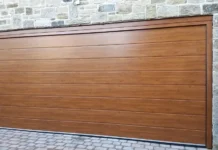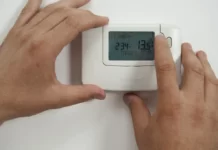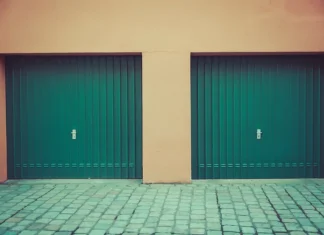So you’re out shopping for a new bed and can’t decide whether to get a duvet or a comforter. Trust us, you’re not alone if you don’t have any idea about the difference between two. Many people will interchangeably use these phrases, but both are considerably different.
We don’t want you to lose your sleep thinking about this, so we’ve made it easy to understand the world of bedding accessories. Let’s get to the difference between duvet and comforter. There are some major differences between these two that you should know before you think of buying one.
Duvet Vs Comforter
We all adore mattresses, but we also recognize that a mattress without bedding isn’t worth anything. Whether you want your bed to seem like a huge white cloud or you want to add some color or pattern, your bedding options provide a simple way to personalize your space.
But the more we looked at mattress bedding, the more confused we got. What exactly is a duvet? What is a comforter, exactly? What is the main difference between both? We find it difficult to make our beds in the morning, or even just figure out what each component of a bedding set is for. That’s why we’ve set out on a mission to settle the duvet vs comforter controversy once and for all.
If you are thinking about questions like, which is the fluffier? Which one is the most convenient to clean? Are they really so different? What are the similarities? If that’s what your concern is, you’ve come to the right spot.
Let’s discuss what they actually have in common.
- Cozy: Duvets and comforters are both super plush, puffy quilts that will keep you warm at night.
- Filling: Both are filled with synthetic fibers or feathers.
- All Year: Duvets and comforters can be used in winters as well as in summers.
Now that we know what is common let’s discuss some differences.
Both duvets and comforters have their own advantages as well as potential drawbacks. So, let’s discuss them in detail for you.
What Is a Duvet?
A duvet is a stuffed top layer of bedding that is usually thicker than a comforter and comes with a washable duvet cover that can be buttoned, zipped, or otherwise attached over the basic duvet insert.
The word duvet means soft comforter in French. Duvets used to be filled with feathers, but today’s duvets come in a variety of fill alternatives, including microfiber and polyester, for individuals who are allergic to feathers. Due to the thickness of a duvet, you won’t need any additional blankets when using one.
Duvet covers let you pick your thread count and fabric—cotton, percale, linen, and flannel are all popular options. If you like to change your bedroom decor on a regular basis, rotating different duvet covers over a single duvet insert can add visual variation while saving bedding storage space.
Now that we know about duvet let’s take a closer look at all the advantages that come with using a duvet:
- Change Style: Our favorite feature of the duvet cover is that it allows you to experiment with different styles. Changing your duvet cover is a simple and easy method to update the look of your bedroom. And, because duvet covers are so easy to remove and change, there’s no reason why you can’t have a variety of different covers with varied designs and materials. Simply switch out your duvet cover when you want to change up your bedroom decor.
- Sleeping Style: When it comes to changing things up, did you know that sleeping without a top sheet is highly common among duvet users? Many bedding brands replace top sheets for duvet covers in sheet sets, which is known as “sleeping European style.” Don’t worry, the duvet cover is usually as soft as your top sheet and is available in a variety of fabrics and weaves. So, if your top sheet is prone to being kicked off the bed or twisted between your legs, try some European-style sleeping instead.
- Easy Care: The duvet is a good option if you don’t want to deal with the hassle of washing a large piece of bedding. Simply remove the duvet cover and toss it in with the rest of your linens in the washing machine. Comforters, on the other hand, are a little more difficult to care for.
Now that we’ve taken a close look at the ins and outs of the duvet, let’s see how the comforter compares.

What is a Comforter?
The comforter is a single piece of bedding that may be used immediately out of the box, with no need for a cover. A comforter is a filled, quilted blanket that is often lighter than a duvet and constitutes the top layer of bedding. Down feathers, down replacements, synthetic fibers, and normal cotton fill are all popular materials used to stuff a comforter.
Comforters are frequently included in bedding sets, particularly bed-in-a-bag products that include everything you need in one package. Pillowcases, pillow shams, a flat sheet, a fitted sheet, and a comforter are usually included to create a layered look on your bed.
Despite the fact that comforters do not come with covers, they are beautiful in their own right and offer some distinct benefits as:
- Easy Shopping: Comforters are frequently sold as part of a “bed-in-a-bag” set, which may appeal to people who don’t enjoy shopping for matching bedding. Your comforter comes with color-coordinating pillowcases and sheets when you buy a bed-in-a-bag bundle. Duvets and covers, on the other hand, are typically purchased separately. So, if you don’t feel like choosing out the right set of pillowcases and linens, you can just get everything at once.
- Simplification: As said before, the comforter is one piece of bedding, there is no need to shuffle with covers or outer layers of any kind. The comforter is more difficult to clean without the cover, but it’s also a lot easier to manage, and you’ll never have to worry about unequal fill distribution.
- All Layered-up: If you prefer a layered look to your bed, the comforter may be the perfect option for you. Comforters look excellent piled beneath blankets and throws and on top of sheets. Because comforters have a sewn-through design and are typically less fluffy than duvets, your extra blankets will rest flat over the comforter rather than lumpy like they may on a duvet.
Your Shopping Guide:
You might be wondering now that we’ve gone over the differences and similarities between comforters and duvets. Which one is the most long-lasting? Which do you think is more popular?” The basic explanation is that everything differs from one brand to the next. However, there are a few generalizations that may assist you in your search:
- Price: While duvets and comforters are typically priced similarly, it’s worth remembering that materials do matter. Down-filled duvets and comforters are often more expensive than synthetic-fiber duvets and comforters. Special textile technologies also contribute to a greater price. It’s also worth remembering that duvets and covers aren’t usually sold together; they’re frequently purchased separately. So, after all is said and done, you may discover that the comforter is less costly.
- Durability: Some may argue that the duvet provides more value for your money. Because the duvet cover is simply replaceable, you can change the design of your bedroom without investing in a new duvet. You’d have to buy a new comforter in this case. In the meantime, a duvet cover acts as a barrier between your duvet and the outside world, preserving the integrity of your duvet.
- Availability: Most bedding brands provide comforters, duvets, and duvet coverings. In fact, more and more bedding companies are integrating duvet covers with their sheet sets. However, the availability of these things is frequently dependent on where you are in the world! Comforters, for example, are popular in the United States, but duvets are preferred in many European and Asian countries.
To make your shopping more easy let’s look at what you should get based on what you are your preferences:
Get a comforter if:
- You want something ready to use.
- You’re looking for something that comes in a set.
- Your bedding should have a layered appearance.
Get a Duvet if:
- You want it to be simple to look after.
- You want bedding that can be used in a variety of ways.
- You want your bed to have a fluffy appearance.
Tips for Caring for Your Duvet or Comforter
When it comes to caring for your comforter or duvet, there are a few things to keep in mind:
- Read Instructions: Closely read the tag of your duvet or comforter to determine whether you want to try washing it at home or take it to a professional.
- Wash Regularly: Duvet covers should be washed as frequently as your sheets and pillowcases for best hygiene. Your duvet insert should only need to be washed once or twice a year with normal use. Your comforter may need to be washed once or twice a month, or perhaps a few times a year, depending on whether you use a top sheet or if you have pets.
- Avoid Fabric Softeners: Although fabric softeners are commonly used in the laundry, they are not suggested for down feather comforters since they stick to them and can destroy the comforter.
- Use Cold Water: To avoid shrinkage, choose a cold water temperature when washing your duvet or blanket at home.
Final Thoughts
So you get the difference between duvet and comforter. Now, it will be up to you to decide based on your personal preferences. A duvet is frequently fluffier than a comforter. Unlike a comforter, which is made up of only one piece and is ready to use straight away, it is made up of two components. So, there you have it, sleepers. You now have a thorough understanding of the differences between duvets and comforters and can confidently choose which is the best fit for you.












